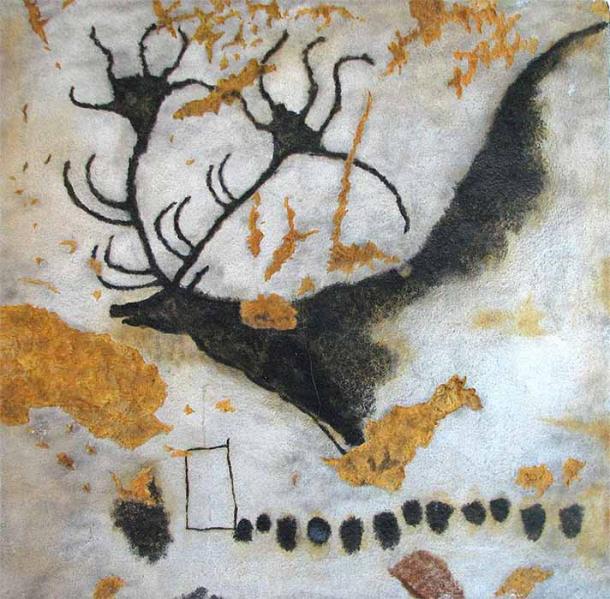
What Were The Ice Age People Counting?
Thousands of sequential marks were painted and engraved on European portable objects and cave walls between 50,000 to 12,000 years ago. These Upper Paleolithic marks under question are depicted with straight lines, rectangular designs, strings of dots, and other shapes. Many hypotheses have emerged to describe these marks, including hunting magic and tallies, fertility and initiation rites, art for art’s sake, pareidolia, cosmology, mathematical sets designating time and altered states of consciousness.
The mathematical sets designating time hypothesis was initially forwarded by the American science writer Alexander Marshack who became concerned with what he called the “suddenlies” of common astronomical knowledge appearing to emerge on different continents in the ancient world. Marshack believed that some of the basic astronomical time-keeping knowledge, such as counting the phases of the moon, was more reasonably established deep in prehistory and then later inherited by civilizations in the ancient world after continued use.
Many details of Marshack’s work are intriguing and prehistorians have long been influenced by him. In a train of thought that may have been long ahead of his time, Marshack also forwarded the notion that people are today more technically advanced than Ice Age people but, not smarter. Marshack gave convincing evidence that Ice Age people could count and had a sense of mathematical sets. Still, he never established a measurable motive for the making of his proposed lunar marks in Ice Age imagery.
Timing Is Everything
The Upper Paleolithic cave image most often pointed to as being designated with lunar counting is the “Black Stag” in the French cave of Lascaux, dating to approximately 17,000 years ago. The species may be either a megaloceros ( Megaloceros giganteus) or red deer ( Cerrus elaphus). The Lascaux artist leaves room for interpretation in the stylization of the Black Stag’s antlers. What can be determined, based on his large autumn antler set, arched neck and fogged hot breadth in the morning air, is that he is rutting.

Replica of the rutting “Black Stag” with his full autumn antler set, neck raised, and hot breath calling in the cows during a cool morning. He rides on a series of 13 black dots that lead to a box. This 13-count may be the lunar phases leading up to the full moon at the box. (Public Domain)
The Black Stag rides on 13 dots which end in a box.
Like this Preview and want to read on? You can! JOIN US THERE ( with easy, instant access ) and see what you’re missing!! All Premium articles are available in full, with immediate access.
For the price of a cup of coffee, you get this and all the other great benefits at Ancient Origins Premium. And - each time you support AO Premium, you support independent thought and writing.
Bernie Taylor is a naturalist and archaeoastronomer whose research explores the origins of mankind’s creativity and awareness of the natural world through Upper Paleolithic cave art. He is the author of Before Orion: Finding the Face of the Hero. Read more at www.beforeorion.com
Top Image: Reproduction of Lascaux artwork in Lascaux II (Jack Versloot/ CC BY-SA 2.0)
By: Bernie Taylor














